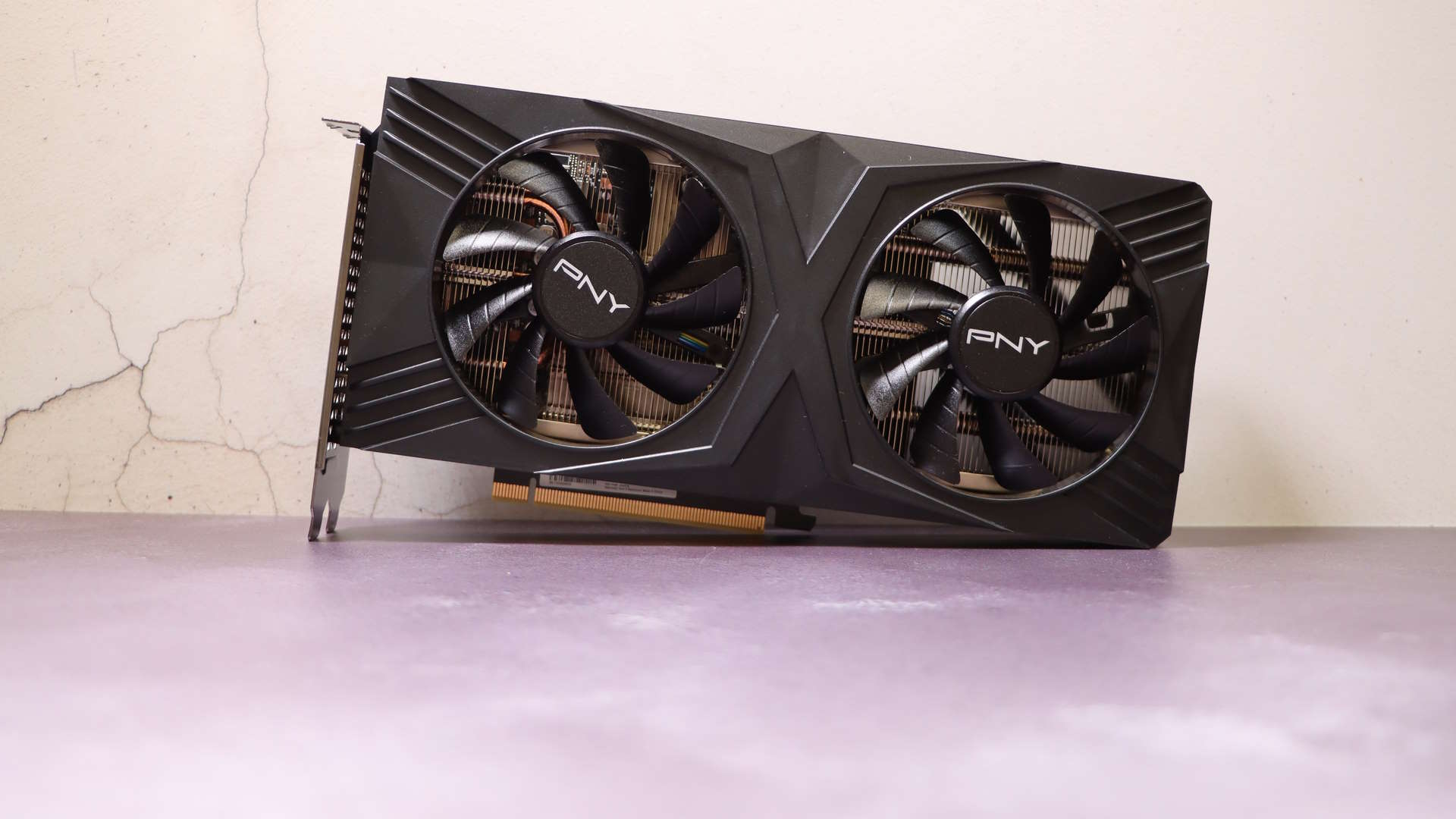
The new Nvidia RTX 4070 is a smart little graphics card, bringing the gaming performance of the venerable RTX 3080 down into a more tempting price point. It's also cooler, quieter, and more efficient, and has the latent potential of DLSS 3 with Frame Generation to give it even more of an edge.
But one of the best things about the new Ada GeForce card is that Nvidia has put the pressure on its partners to ensure there are plenty of reference-priced versions of the GPU ready at launch.
We've been promised that practically anyone who wants a reference card—whether as a Founders Edition or a third-party AIB version—should have the opportunity to buy one. That's a lofty goal in all honesty, and given the voracious demands of PC gamers might be a tough one to actually match, but speaking with retailers there are far more cards in the channel than with previous RTX 40-series launches, which gives us hope.
And that makes a card such as the reference-priced PNY RTX 4070 very much worth a look.
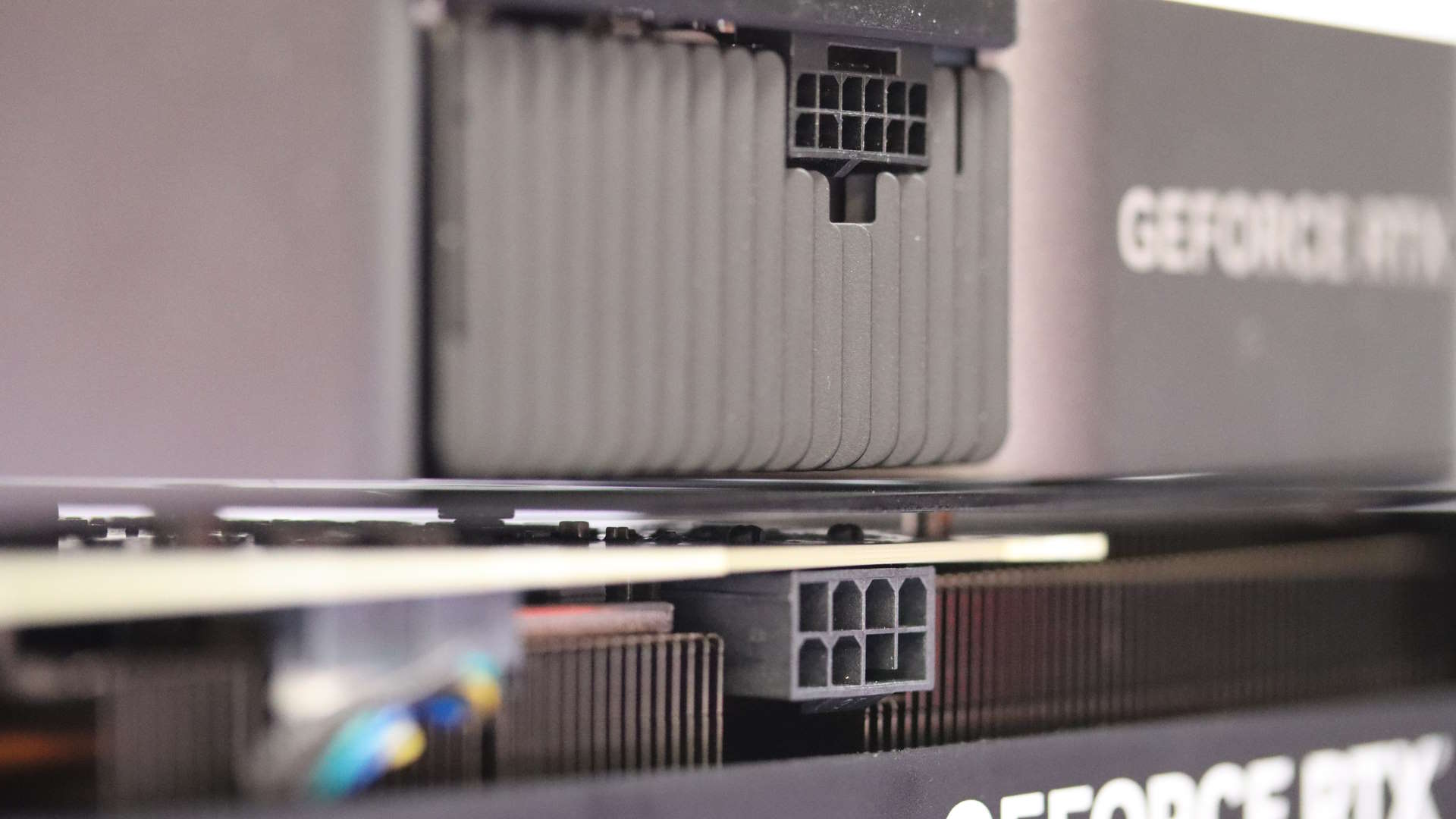
GPU: Nvidia AD104
CUDA cores: 5,888
Boost clock: 2,475MHz
Memory: 12GB GDDR6X
Memory bus: 192-bit
TDP: 200W
Price: $599
You could argue it's the epitome of a basic reference card, and that when you're paying $599 for a lightweight, dual-fan GPU you might expect more than a nondescript plastic shroud. But the tweaked AD104 silicon at the heart of the RTX 4070 doesn't really need more accoutrements, it doesn't need a vast cooler, or a huge array of VRMs. And you don't need another RGB LED lighting up your rig.
So, while I was a little concerned the courier had wandered off with my card when he handed over the suspiciously lightweight box, I'm more than happy with the simplistic design choice PNY has taken with its reference card. And hey, it's got a metal backplate and some visibly chonky copper heatpipes in action.
The AD104 GPU inside the RTX 4070 is the same as that used in the RTX 4070 Ti, just minus a few SMs. That means you're getting 5,888 CUDA cores instead of the full chip's 7,680, you also get fewer RT and Tensor Cores. You are, however, still getting the same 12GB GDDR6X memory configuration. That all means you're looking at a card whose gaming performance is maybe 20 - 25% off the Ti version.
But the generational improvement of Ada vs. Ampere is highlighted by looking at the core configuration of the RTX 4070 vs. the RTX 3080. That classic GeForce GPU comes with 8,704 CUDA cores, 22 more RT Cores, and more ROPs. It also has a wider memory bus—320-bit against a 192-bit bus—and therefore a whole lot more memory bandwidth.
This is TSMC's 4nm process combined with Ada's efficiency, however, and that means there are billions more transistors in the package despite it being less than half the size of the RTX 3080's Ampere GPU. It's also running almost a full 1GHz quicker under gaming load. So, alongside nine times the amount of L2 cache attached to the GPU, those fewer CUDA cores are actually able to deliver pretty much the same level of performance.
Sometimes a little more, occasionally a little less.
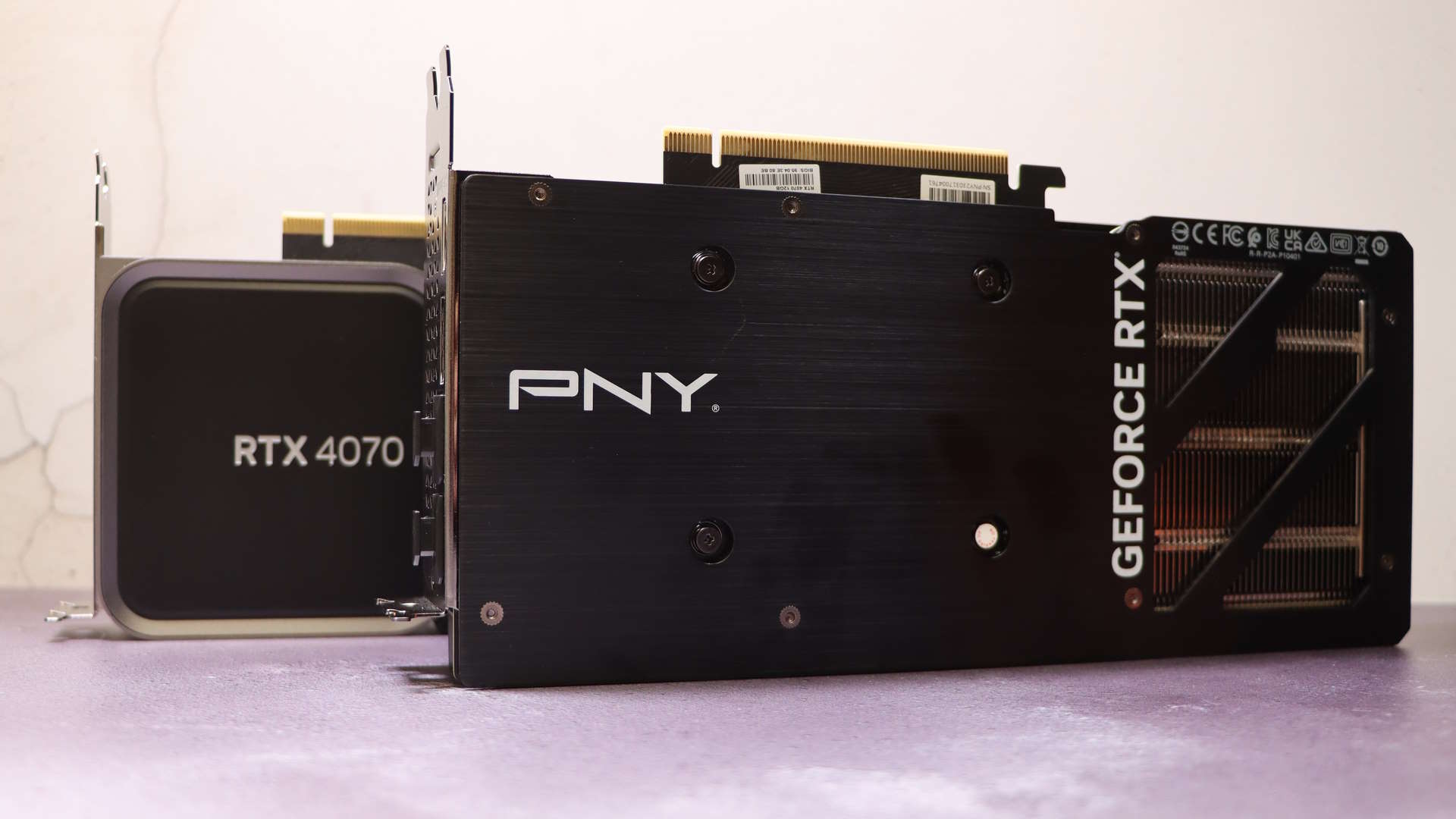
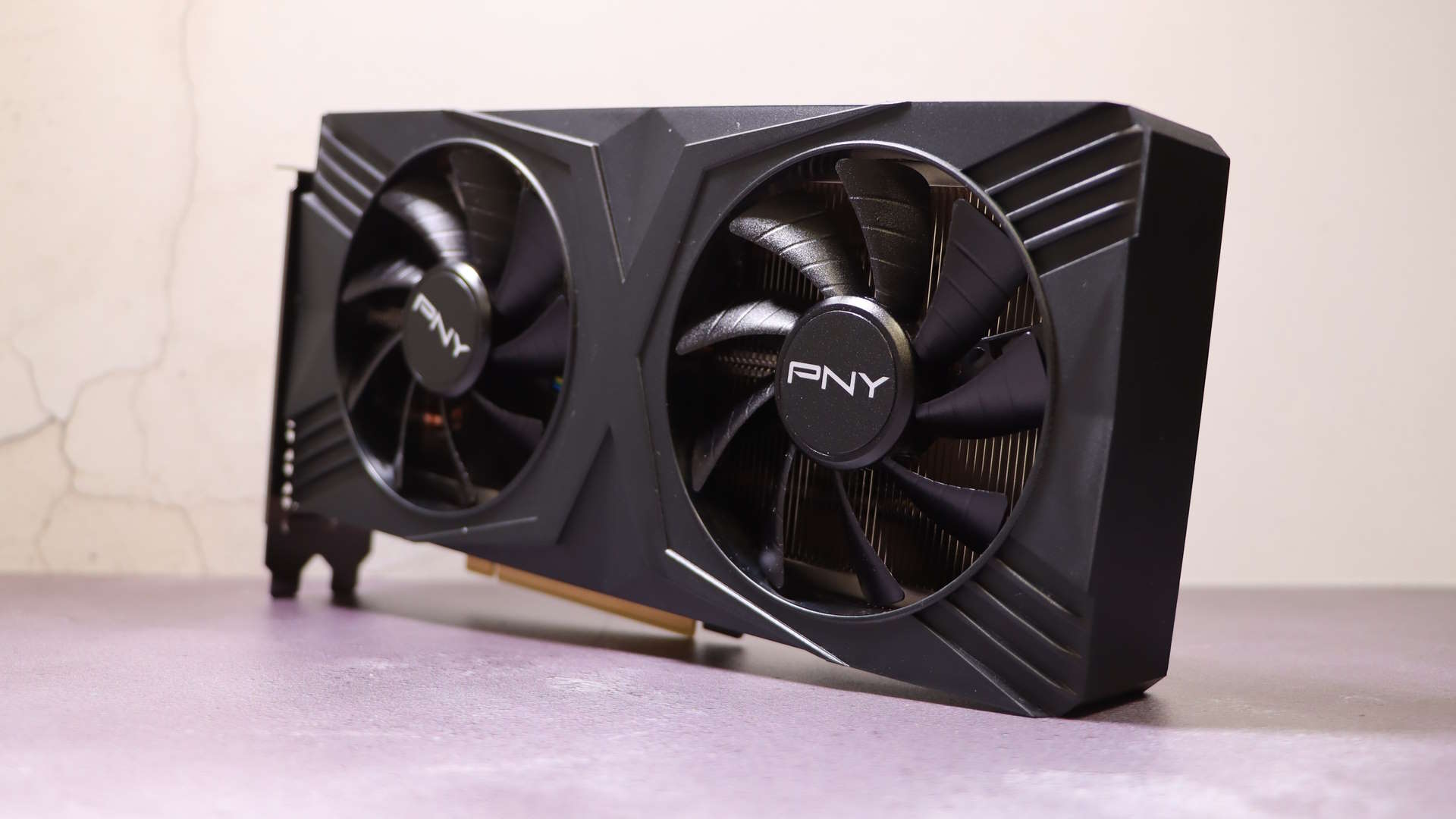
It being an RTX 40-series GPU you also gain access to DLSS 3.0 and Frame Generation. That last one being the key differentiator and the feature which promises to eventually push it past the RTX 3080 in gaming terms. It's an unprecedented bit of AI tech magic that takes advantage of Ada's Optical Flow Accelerator hardware to create entire game frames from scratch. Well, not quite from scratch, but based on the frames around them. Still, with DLSS in play as well there's not as much traditional rendering per frame as there used to be.
Frame Generation has to be added on a per-game basis, however, so not every game has it, or will ever be upgraded to include it. Which makes it a potential performance uplift over the previous Ampere generation, rather than something that can be completely relied upon.
But when Frame Generation works, it really gives the RTX 4070 some serious 4K ray traced gaming chops.
1440p gaming performance
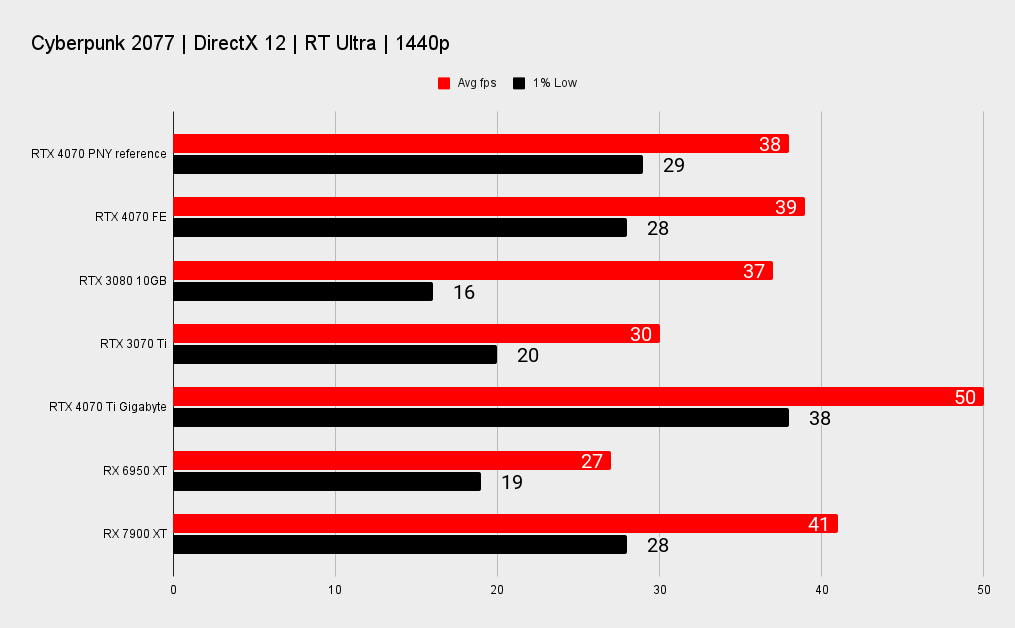
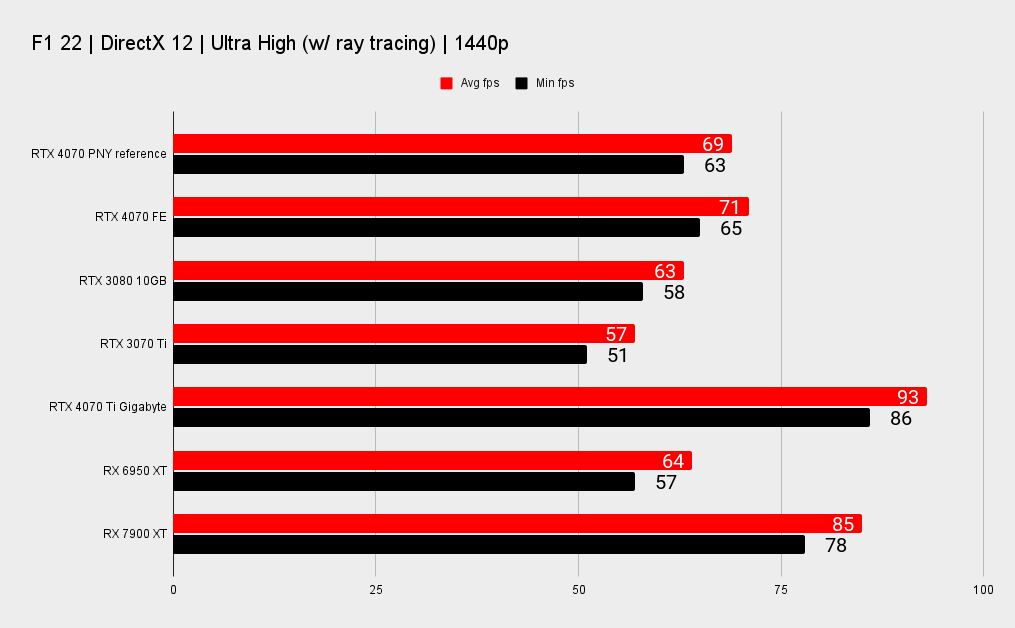
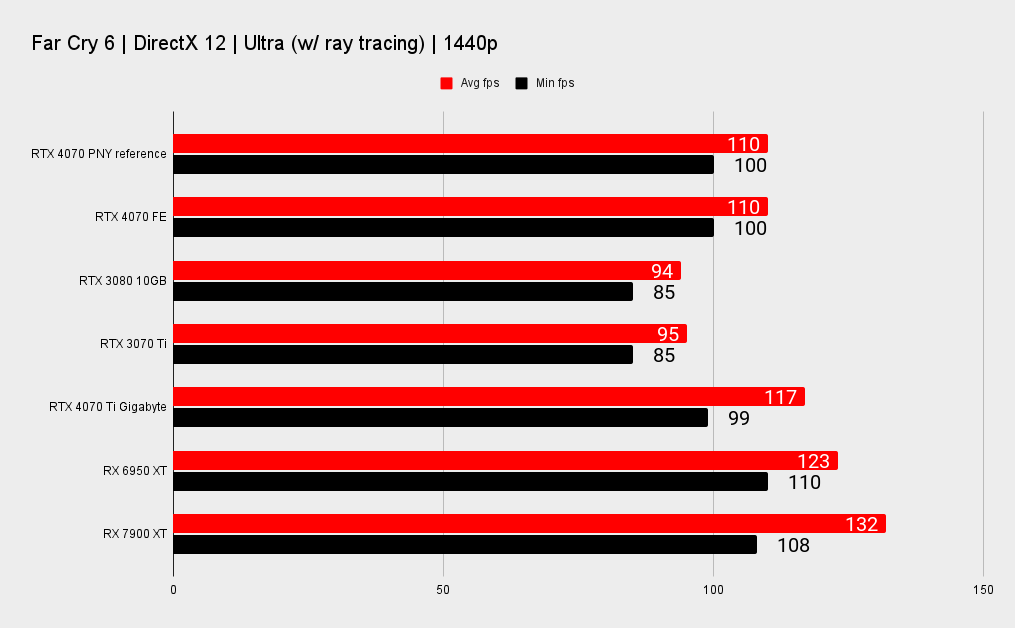
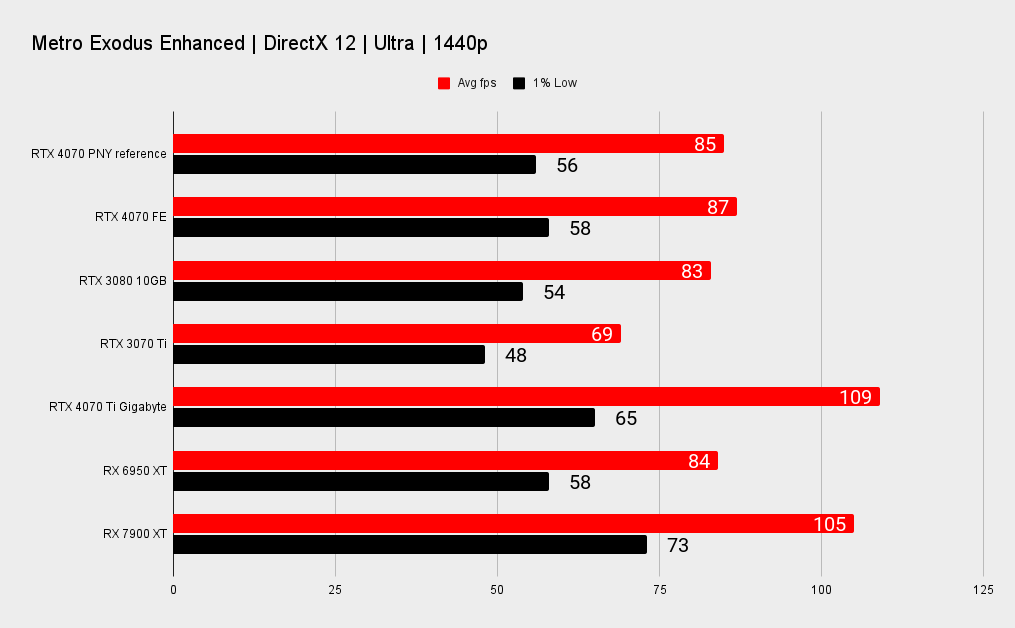
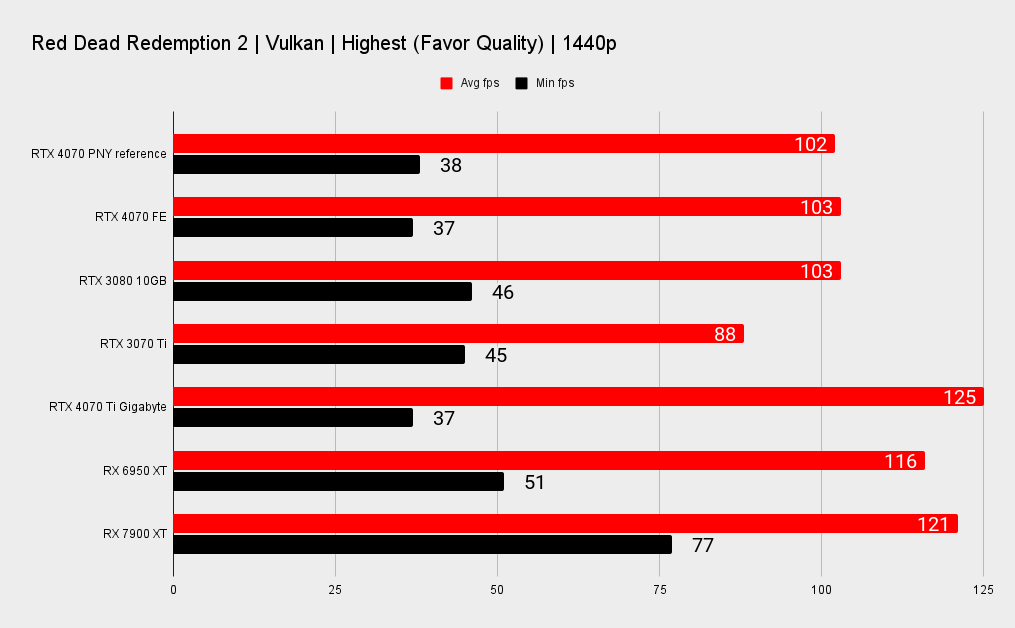
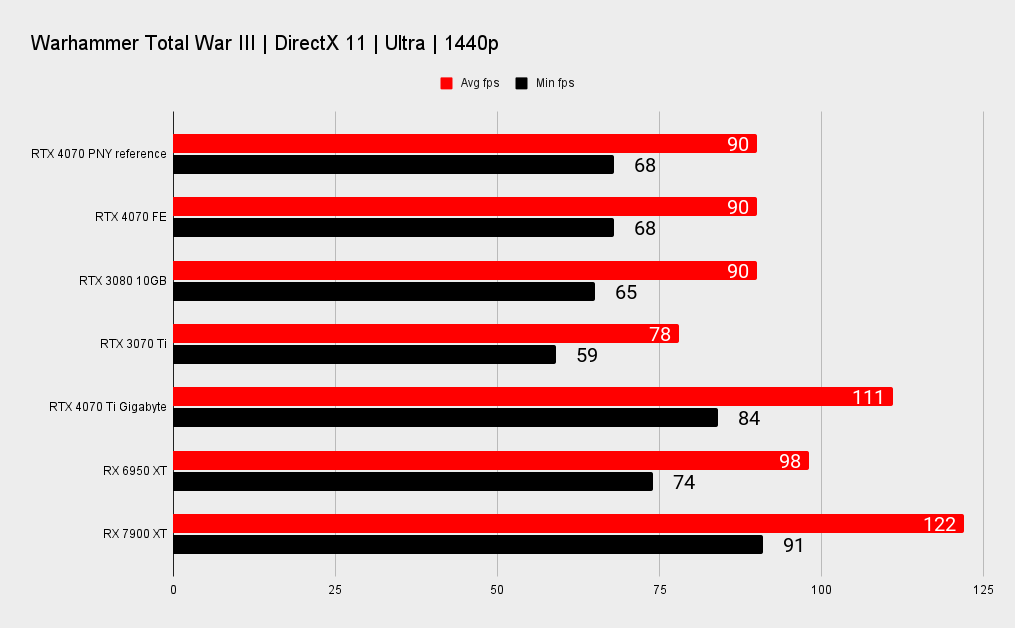
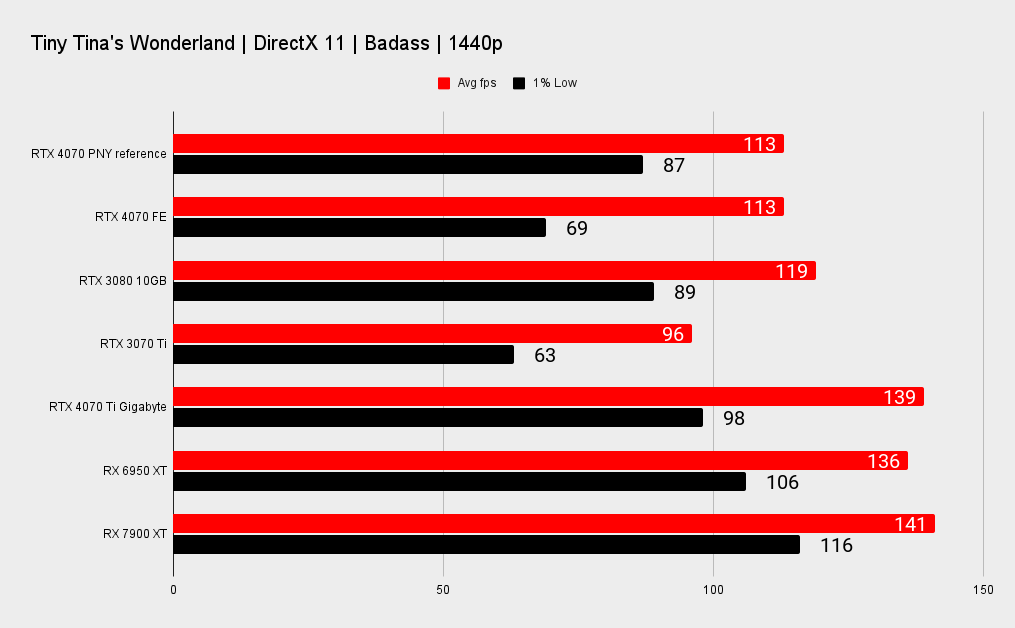
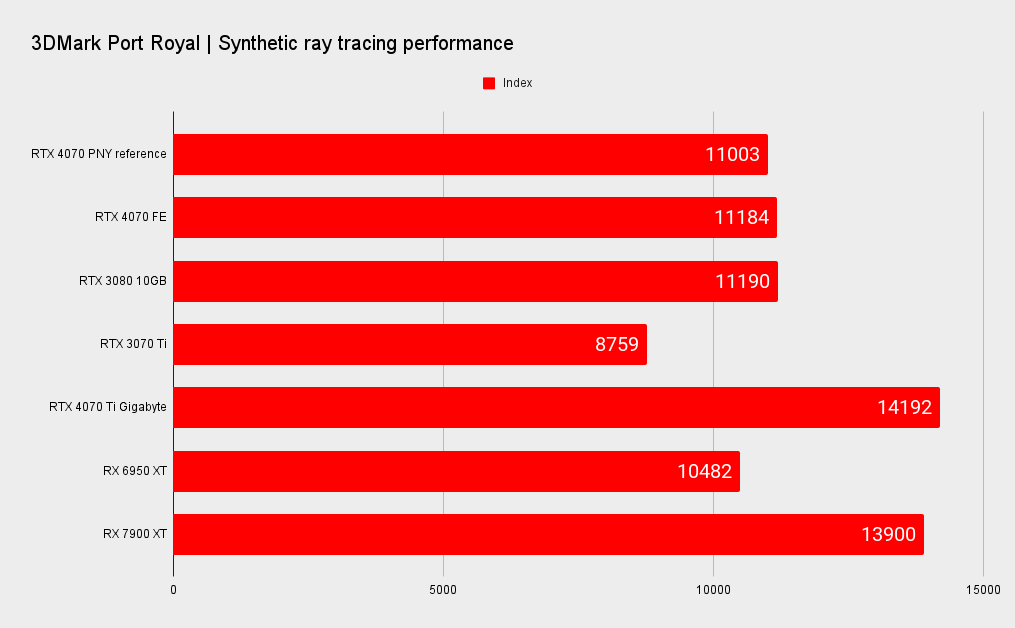
4K gaming performance
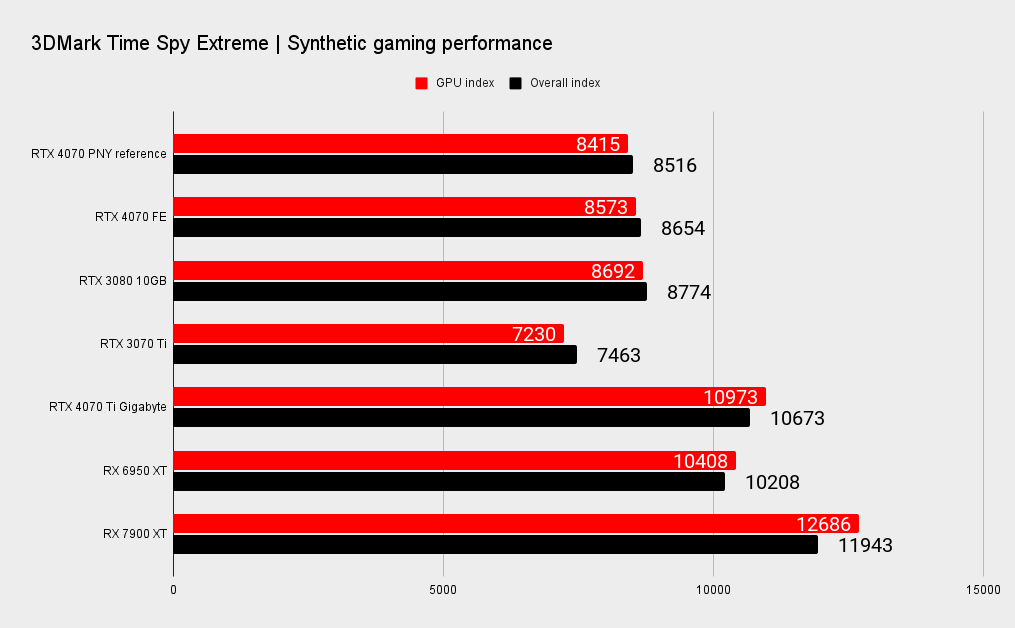
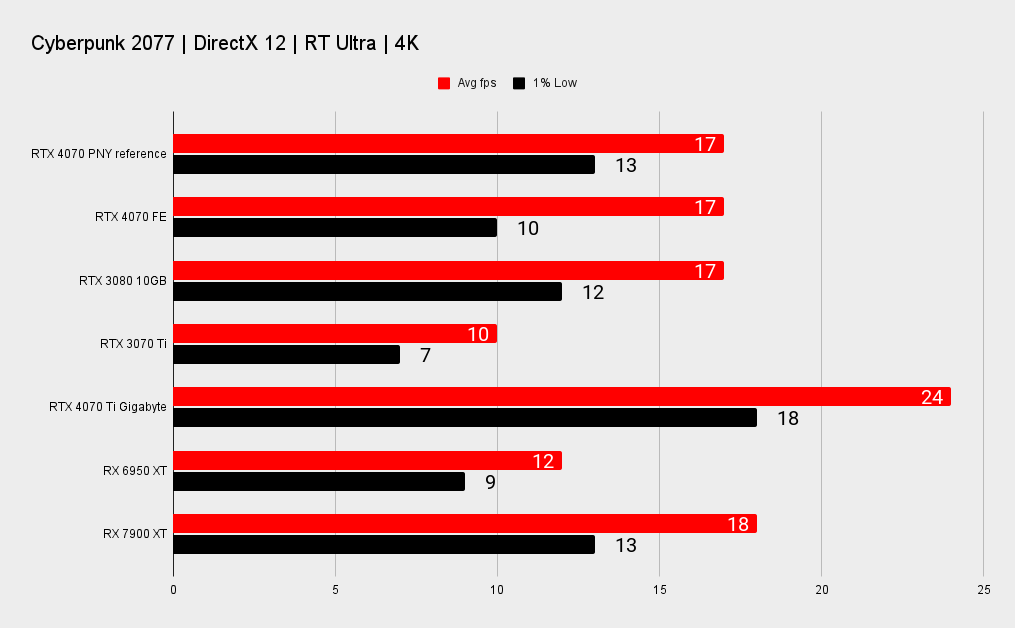
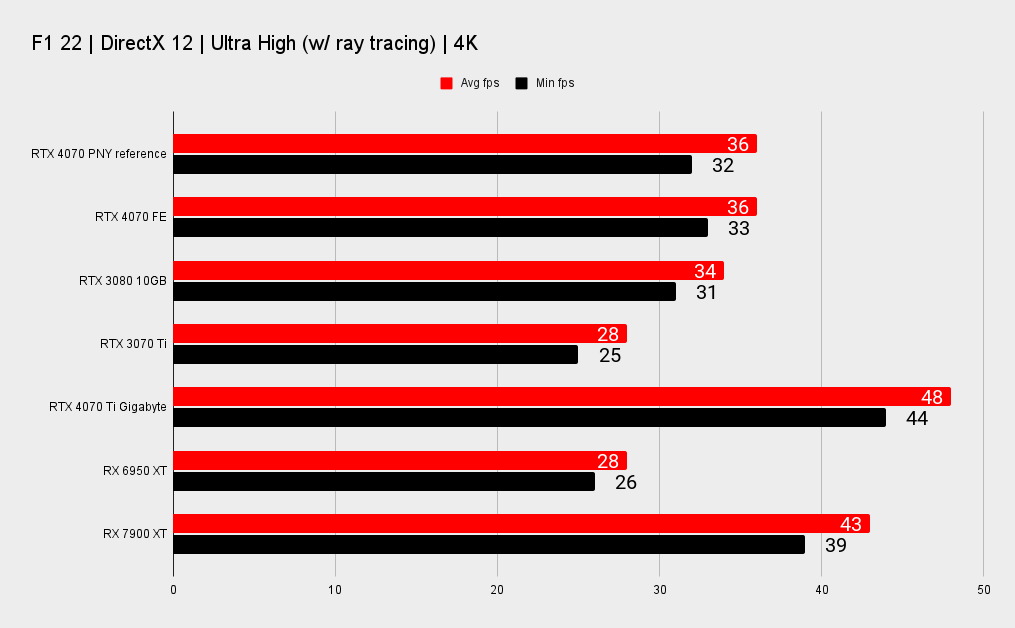
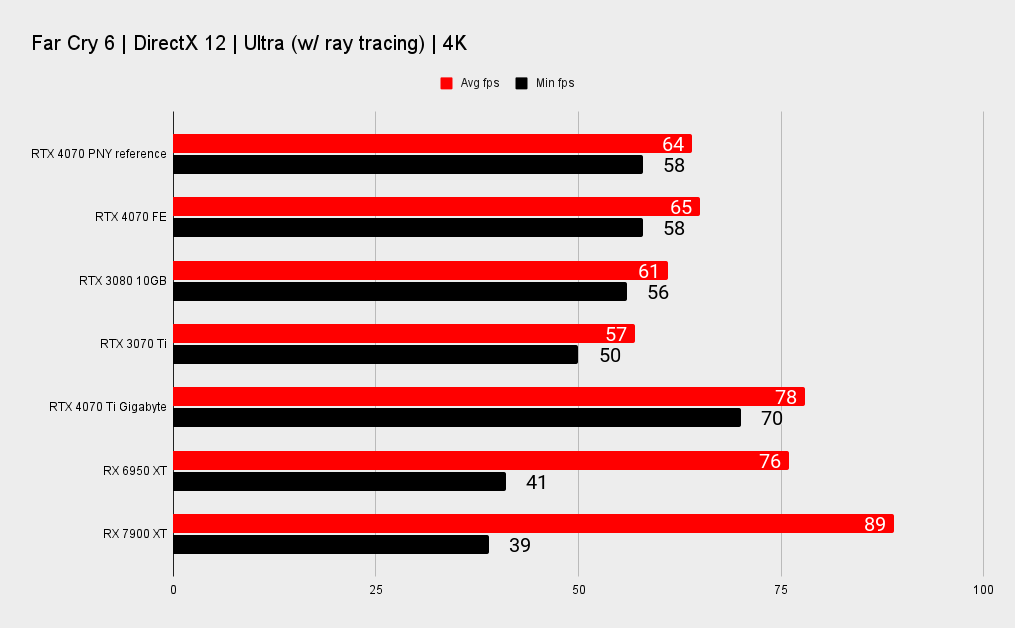
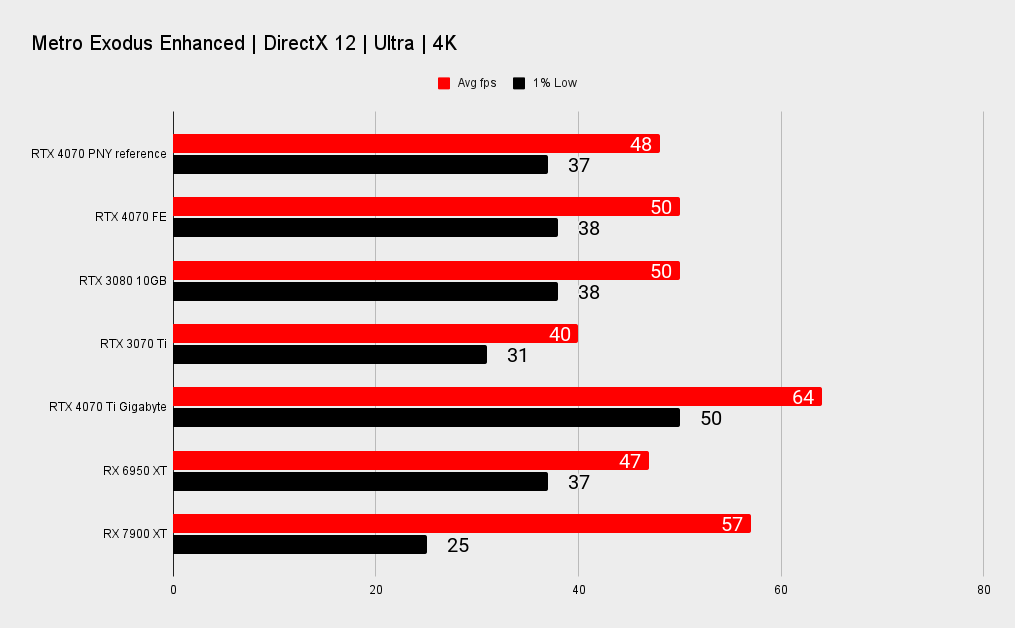
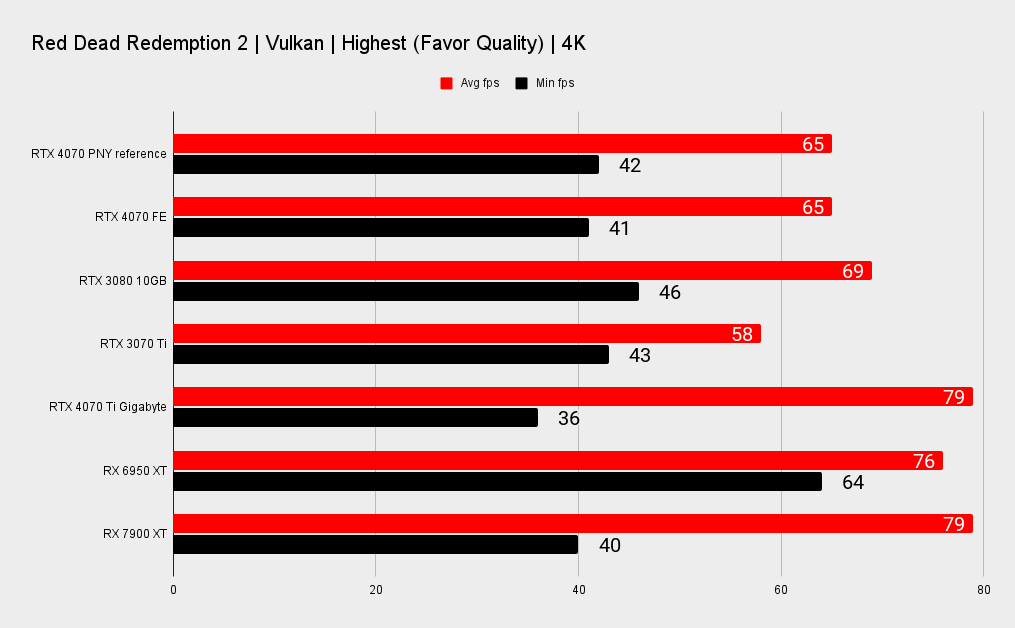
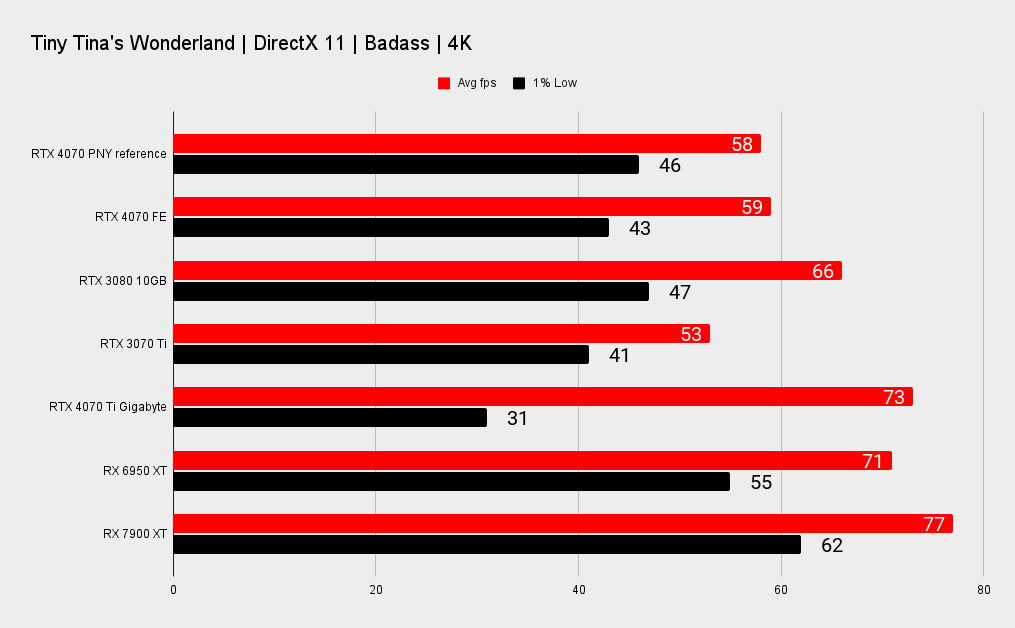
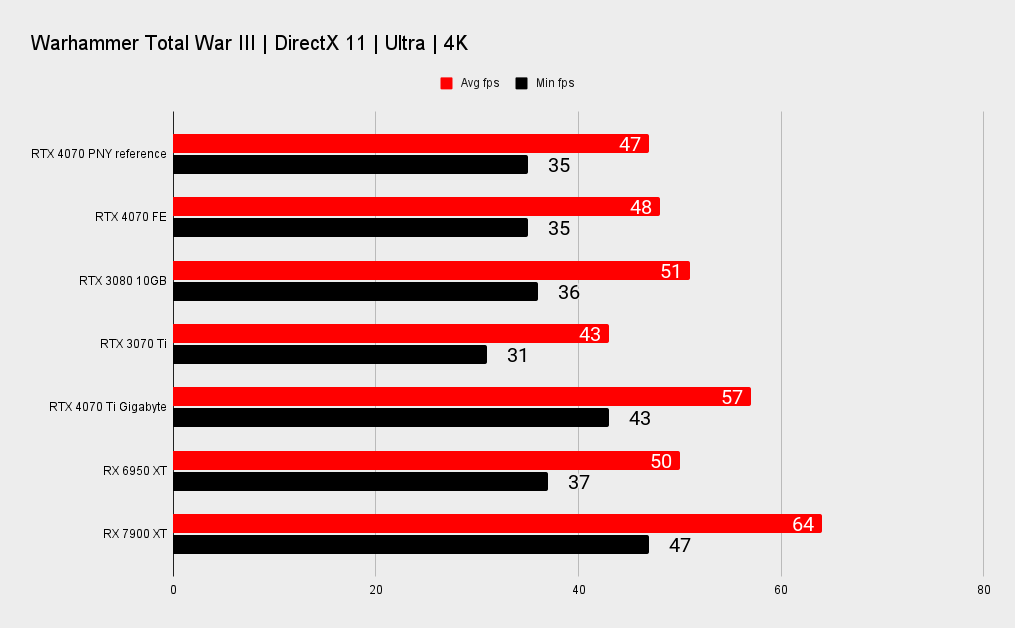
System performance
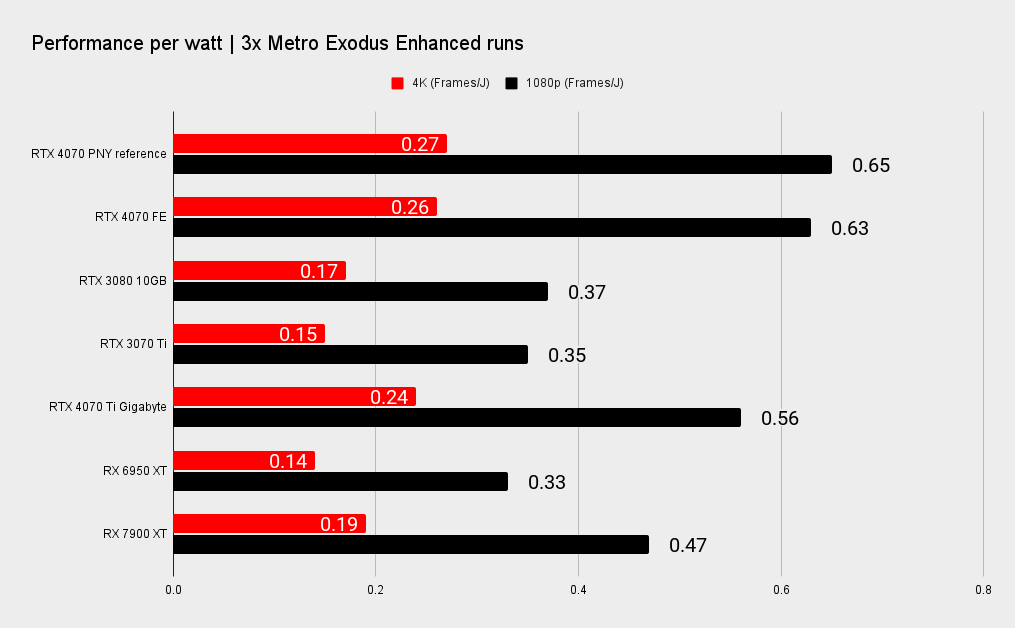
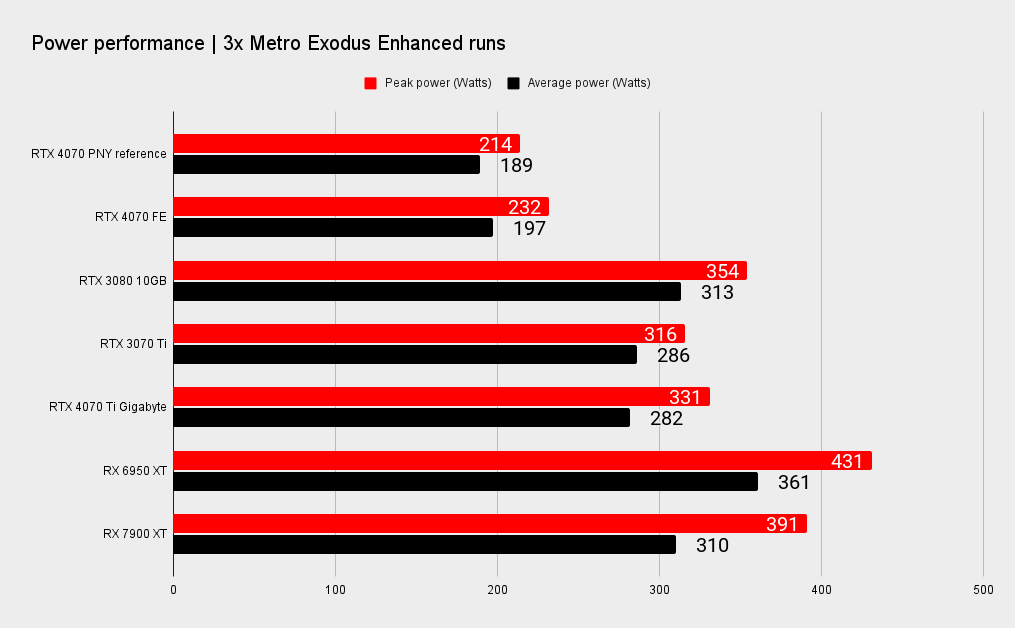
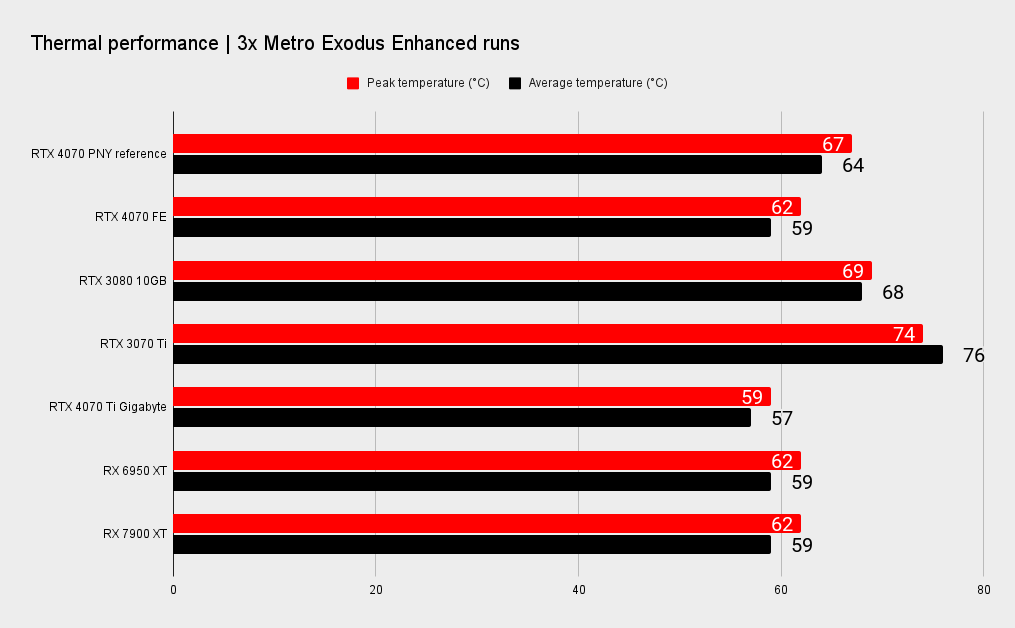
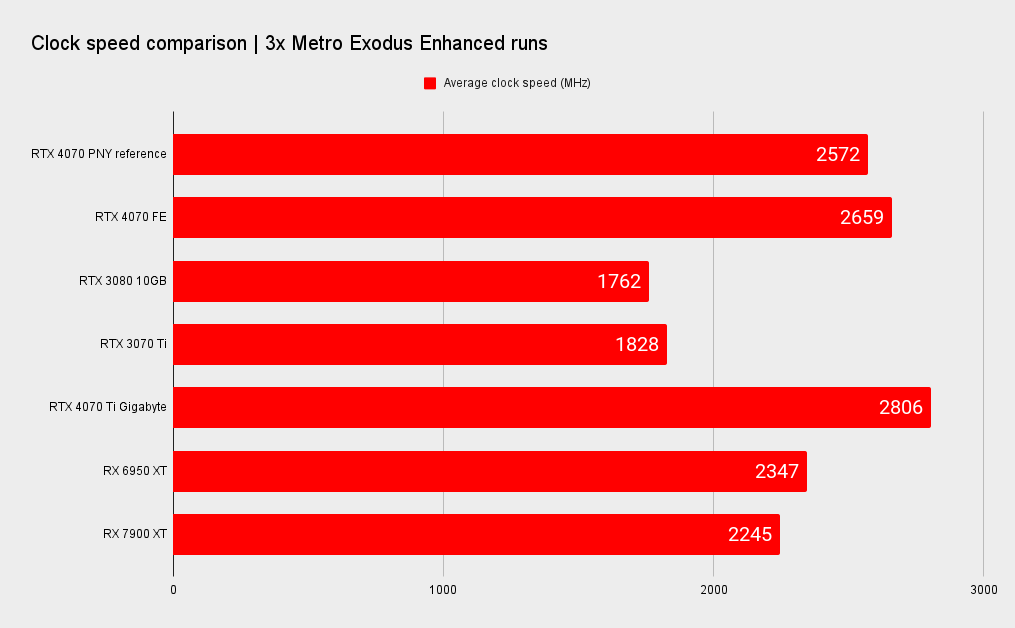
✅ You miss out on a Founders Edition: The RTX 4070 FE from Nvidia is the best reference-clocked version available, but they're also more limited in stock. Given how close the performance is with the PNY, though, it's an easy second choice.
✅ You're terrified of the 16-pin power plug: The PNY RTX 4070 comes with the standard 8-pin power socket, so no melty connectors for you. Probably.
❌ You already own a decent RTX 30- or RX 6800-series GPU: At ~20% higher performance than the RTX 3070 Ti, and similar performance to the RX 6800 XT, spending another $600 so soon isn't worth it just for Frame Generation.
❌ You're into card aesthetics: The PNY reference RTX 4070 is a basic card, with a black plastic shroud, and is certainly not a flashy card you're going to want to show off in a presentation case.
As a reference card, the PNY RTX 4070 is capable of delivering similar levels of gaming performance to the Nvidia RTX 4070 Founders Edition. Though not identical. The Founders cards still remain the best versions of Nvidia's reference GPUs—they look the best, and they perform the best, even if they're not specifically overclocked.
The Founders card actually runs around 100MHz quicker than the chip inside the PNY card, and that translates into a small frame rate lead. In all honesty, though, it's so small as to be largely insignificant in the grand scheme of gaming things; generally just a few frames per second here or there.
That does mean it draws less power, but the simple dual-fan cooler isn't quite as effective as the Founders' shroud, though it's not exactly hot. Nor is it loud. It's a subtle wee graphics card that will happily chew through your games without demanding undue attention.
There is one key difference, that's mostly key because of recent fiery issues, and that's the use of an 8-pin PCIe power connector instead of the 16-pin version Nvidia still favours for its cards. This is the first of the RTX 40-series to use the older style of power connector, though reportedly only the reference clocked versions have been given the option to switch from a 16-pin connector.
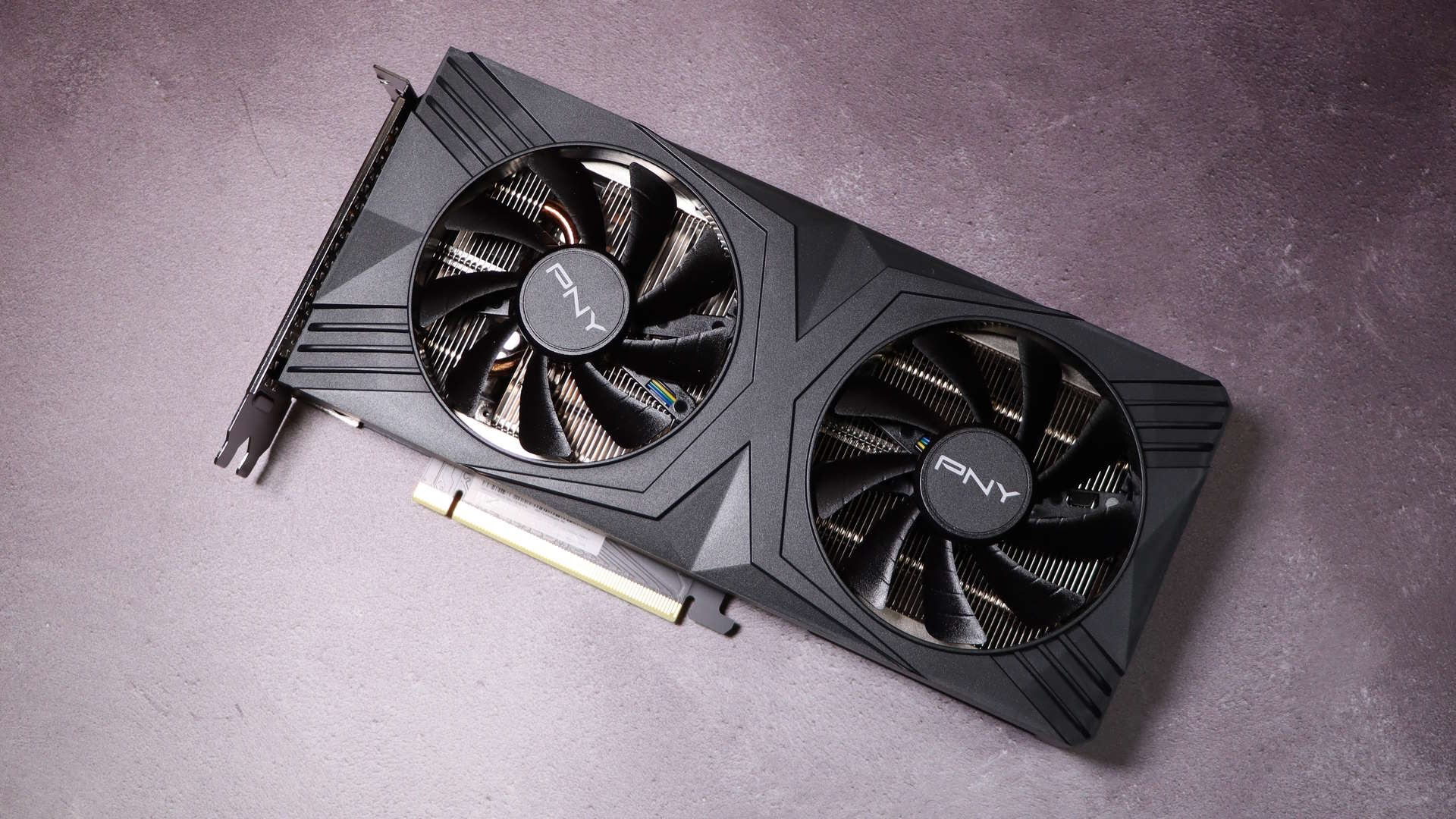
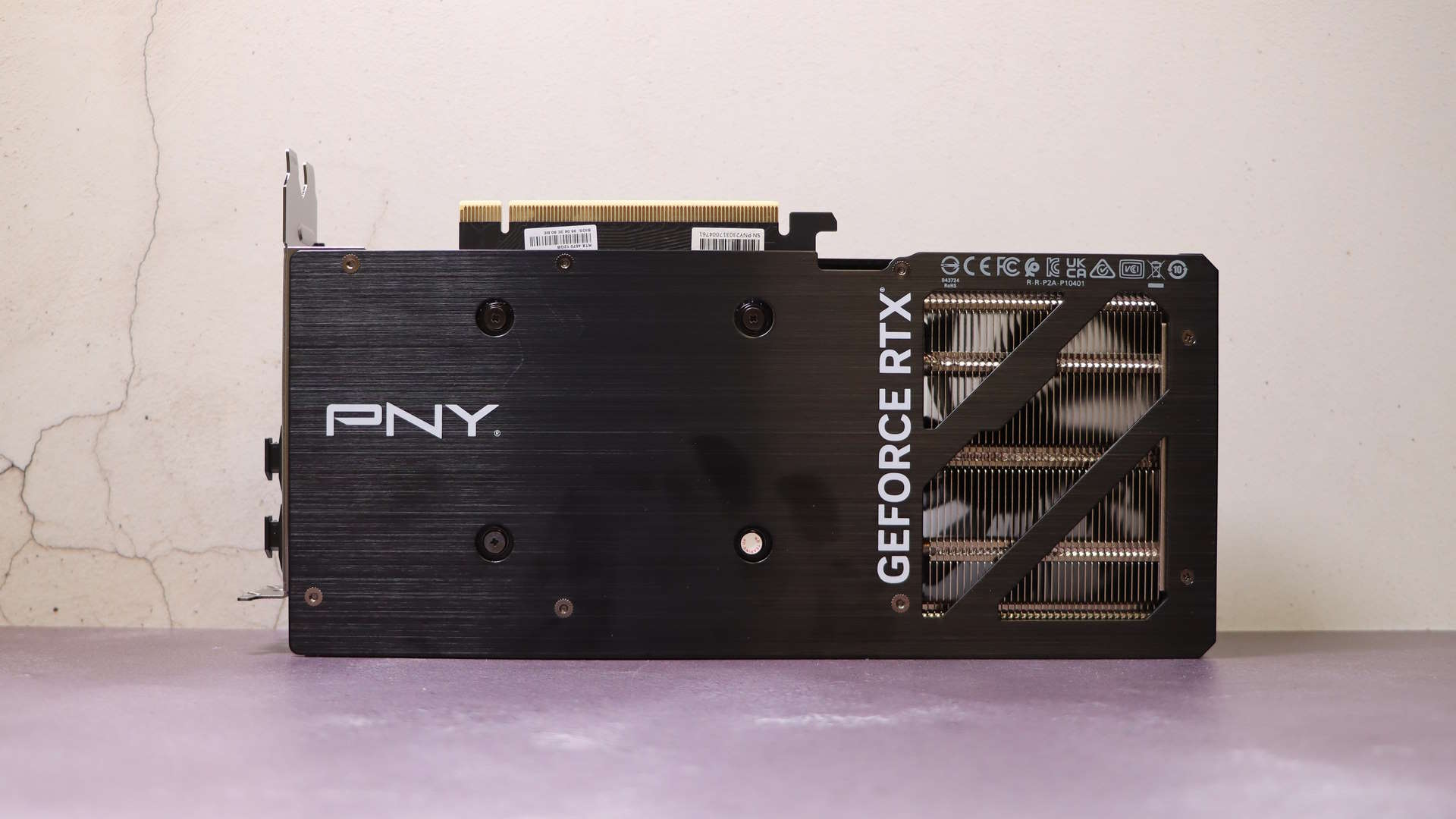
A subtle wee graphics card.
Given the power going through that socket to the lower-spec GPU, it's arguably not the biggest thing for the RTX 4070, and not going to be the decision maker for me.
All things being equal I'd absolutely prefer to have the Founders Edition RTX 4070. As a physical object it's a nicer thing, is ever so slightly faster, and ever so slightly cooler. But, importantly they're also more likely to vanish from stock in half an hour, and only appear every now and then.
So, when third-party reference versions perform so close to the Founders cards—and therefore at the same level as the old RTX 3080 we loved so well—if I couldn't find one on sale I certainly wouldn't gripe with this effective PNY card as a second choice.







